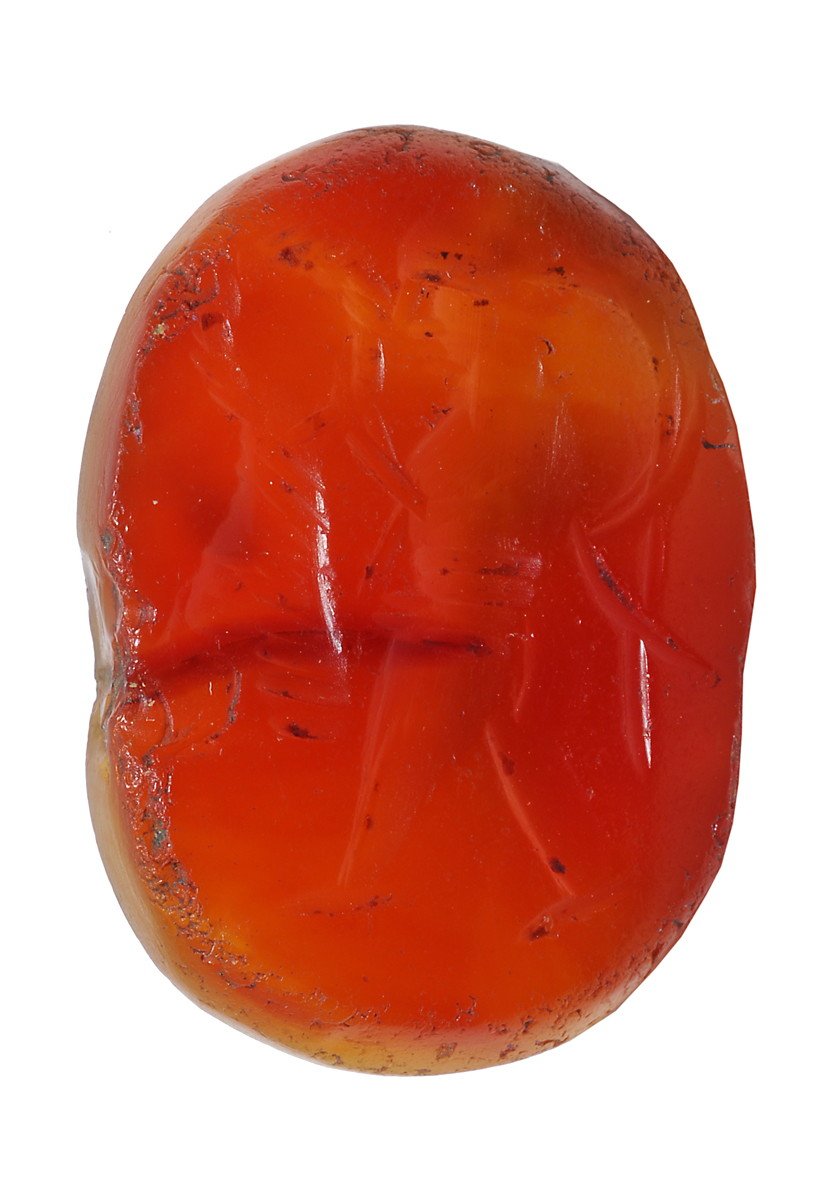
Sasanian gem
Egyptian Art

| Date | 2nd-1st centuries BC |
|---|---|
| Object type | tomb equipment |
| Medium, technique | wood, painted |
| Dimensions | 30.5 x 19 x 19.5 cm |
| Inventory number | 51.2757 |
| Collection | Egyptian Art |
| On view | This artwork is not on display |
The canopic chest was an important part of the funerary equipment of the ancient Egyptians since the Old Kingdom. It was made to hold the four canopic jars that contained the wrapped internal organs removed from the corpse during the mummification process.
This painted wooden chest comes from the Ptolemaic period. Its contents are now lost. Considering its dimensions and the burial customs of the period, it is unlikely that this chest contained canopic jars; the wrapped organs were rather placed in it directly.
The box has a flat lid, which is painted with a few red perpendicular lines on a white ground. The side panels bear images of the four sons of Horus, protectors of the internal organs. The front is decorated with the human-headed Imsety, the rear with the jackal-headed Duamutef, the right with the hawk-headed Qebehsenuef, and the left the baboon-headed Hapy.
This record is subject to revision due to ongoing research.